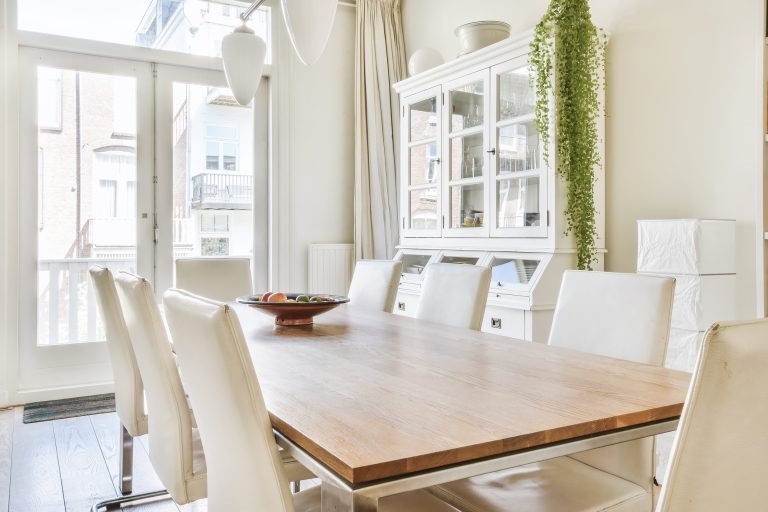The table dimension is one of the most commonly misjudged elements when furnishing a space. Getting the measurements wrong can disrupt flow, comfort, and even the room’s functionality, whether it’s a dining table, work desk, or coffee table. Many assume that simply choosing a table based on its appearance is enough. Still, this mindset often leads to frustrating mistakes that could have been avoided with a little foresight and understanding.
Why Standard Table Dimensions Aren’t Always Right for You
There’s a reason standard sizes exist: they provide a baseline that suits average needs. However, real homes and lifestyles rarely match averages. For instance, the standard dining table height is about 30 inches, but that doesn’t mean it works for everyone. Taller people may feel cramped, while shorter people might find the height awkward for everyday use. Similar issues arise with desks and kitchen islands, where mismatched heights can result in poor posture and long-term discomfort. This is where considering custom dimensions makes a huge difference in day-to-day comfort.
The Impact of Room Size and Flow
Another overlooked factor is the space around the table. Most people measure the table but forget to include the clearance space needed for chairs and movement. For dining tables, at least 36 inches of clearance is recommended on all sides so guests can move freely without bumping into walls or furniture. In smaller rooms, failing to plan for this space can make the entire room feel cramped and impractical. Simply put, a beautiful table won’t compensate for poor spacing—you’ll resent it every time you squeeze past it.
The Relationship Between Function and Shape
Choosing the right shape is just as critical as selecting the right size. Rectangular tables are often chosen by default, but square or round tables may be better suited for smaller or more social settings. Round tables encourage conversation and reduce the dominance of a “head” position, perfect for family gatherings or collaborative work. On the other hand, if your room is narrow, a round table might create a traffic nightmare. Function and shape must work hand-in-hand, and that starts with understanding what activities the table will be used for most often.
When Aesthetic Tricks Mislead You
Design trends and showroom displays can be deceptive. That sleek, minimalist table might look amazing in a staged photo, but it becomes a hassle rather than a highlight if it doesn’t provide enough surface area or leg clearance. Always translate style into practical dimensions before purchasing. Consider the leg placement, which can affect how many people the table comfortably seats, regardless of width.
Don’t Underestimate the Importance of Surface Space
Whether buying a work desk or a kitchen table, having enough usable surface area is non-negotiable; it’s easy to miscalculate when focusing only on width and length. What matters more is how much room is usable. Tables with thick aprons or decorative edges often reduce the usable space significantly. This becomes especially problematic in multi-use tables, where you might switch from dining to working or crafting.
Materials and Thickness Matter More Than You Think
Beyond just the size, the thickness and material of the tabletop can change everything about how it feels and functions. A thick, heavy slab might look impressive, but it could overwhelm a smaller space or make it difficult to move chairs underneath. Glass tops can open up a room visually, but they can be fragile and cold to the touch. Wood, laminate, and metal bring different spatial and weight considerations that impact how the table fits into your home.
Adjustable and Expandable Options Deserve More Attention
Many overlook adjustable-height or expandable tables, thinking they’re too industrial or gimmicky. But with the rise of compact living and multi-purpose rooms, these features have become game-changers. Adjusting the table height to fit different chairs or expanding the surface area for guests can make one table serve multiple roles, saving space and money in the long run.
Measurement Mistakes You Can’t Afford to Make
One of the most critical errors is measuring without context. People often use measuring tape but don’t test the feel of the dimensions in real life. Before committing to a purchase, it helps to tape off the table’s footprint on the floor and simulate its presence. Sit around that taped space to assess comfort and clearance. Precision in measurement isn’t about numbers alone but real-world practicality.
Custom vs. Ready-Made: The Real Tradeoff
Choosing between a ready-made and a custom-built table isn’t just about price—it’s about precision and satisfaction. Custom options allow for tailored heights, widths, leg styles, and finishes that align with your room’s specific dimensions and design needs. While custom tables may come at a higher cost, they often eliminate compromises with one-size-fits-all solutions. If your table is the centerpiece of your home, it’s worth investing in one that fits your lifestyle exactly.
When it comes to furnishing your space, don’t make the mistake of treating table dimensions as a secondary concern. It’s not just about finding something that fits your space—it’s about finding something that fits your life. The right dimensions can elevate form and function from room flow and ergonomics to functionality and style. So before you fall in love with a table based on looks alone, take a closer look at the numbers—and make sure they work for you, not against you.


































